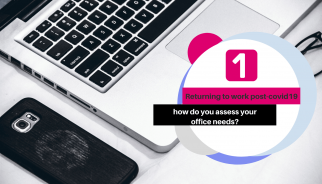
Are you finding that some of your clients, some who have previously been good clients, have suddenly become quite fussy?…

Are you finding that some of your clients, some who have previously been good clients, have suddenly become quite fussy?…

In the short-term, it seems likely that many of us will remain working from home even after government orders to…

Thousands of parents have been juggling two to three full-time jobs for the past 11 weeks now: their normal job,…

With the changes in working practices COVID-19 has caused and the likelihood that many people will be working remotely for…

Whether leading in person or virtually, there are 8 principles that you can adopt to improve team performance. Many organisations…

It’s looking like remote working will be the ‘new normal’ as we ease our way out of lockdown. While this…

With the recent easing of lockdown restrictions, several businesses are asking some of their employees to return to the workplace…

How to stay positive for your family and your team (even if you are scared and worried too) Do you…

Are your team actually working? With the phased reopening of businesses over the new few weeks to months, many businesses…

Flexible Furloughing From 1 July 2020, Businesses will have the flexibility to bring previously furloughed employees back to work part-time…